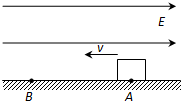阅读理解。
Cambodia was in many ways similar to Laos, although it has twice the population. At another inn, we
talked with a teacher who told us that half of the people in her country couldn't read or write. Her village
couldn't even afford to build a school, so she had to teach outside under a large tent. When we said goodbye,
we all felt very lucky to have studied in college. Back on the road, we passed between many hills and forests.
Then we came to the plains and entered Phnom Penh (金边), the capital of Cambodia. In many ways it looked
like Vientiane and Ho Chi Minh City; it also had wide streets with trees in rows and old French houses. Unlike
Vientiane, ships could travel the Mekong River here. In the centre of the city we visited the palace and saw a
beautiful white elephant. It can only be seen outside the palace on special days. We ate an early supper and
went to see a great temple with floors made of silver.
The next morning our group slept late. We were very tired from the long bike ride the day before. Cycling
in the hills had been difficult. Now our cousins had the chance to make jokes about Wang Wei and me. Perhaps,
they said, they were the strong ones! We had lunch at a nice outdoor cafe. then rode out of the city.
Two days later we crossed the border into Vietnam. We began to see many more people, but I wasn't
surprised. I read in an atlas before our trip that Vietnam has almost seven times the population of Cambodia.
We met a farmer who gave us directions and told us that he grows a new rice crop four times every year so
he can feed more people. He also told us that the northern part of his country has many mountains and it is
much cooler than here in the south, where it is flat. Although the flat delta made it easier for us to cycle, we
got warm very quickly. So we drank lots of water and ate lots of bananas. Soon the delta separated into nine
smaller rivers. Two days later, after we had passed thousands of rice fields, we came to the sea. We were
tired but also in high spirits: our dream to cycle along the Mekong River had finally come true.
1. Why did the author (作者) say they all felt very lucky to have studied in college? Because _____. [ ]
A. they studied a lot
B. they knew how to cycle down along Mekong River
C. they learnt that half of Cambodians couldn't read or write
D. the teacher they talked with told them
2. Which is the right order of the autor's travel route (路线) according to the passage?
a. passed thousands of rice field, then came to the sea
b. talked with a Cambodian teacher at an inn
c. had lunch at a nice outdoor cafe
d. entered Phnom Penh
e. crossed the border into Vietnam
f. visited the palace and saw a beautiful white elephant [ ]
A. dbfcea
B. dbfeca
C. bdfaec
D. bdfcea
3. Who gave the author directions when they were in Vietnam? [ ]
A. hunter.
B. A teacher.
C. A farmer.
D. A fisherman.
4. Suppose Laos has a population of 6.5 million, what's the population of Vietnam?[ ]
A. 13 million
B. 1.3 million
C. 91 million
D. 9.1 million
5. Which of the following statements about Phnom Penh is true according to the passage? [ ]
A. It's the capital of Vietnam.
B. It has twice the pobulation of Laos.
C. Ships can't travel the Mekong River here.
D. There is a great temple with floors made of silver.

